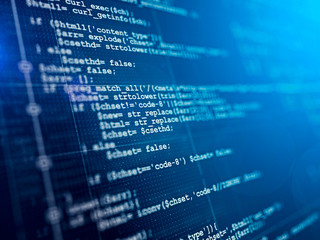Learn how to upgrade oxzep7 Python step by step, avoid errors, and keep your projects running smoothly with our complete, easy-to-follow upgrade guide.
Introduction
Upgrading oxzep7 Python is essential to ensure your development environment stays secure, compatible, and up to date with the latest features. If you’re wondering how to upgrade oxzep7 Python safely, this in-depth guide explains exactly what to do, common pitfalls to avoid, and practical tips for managing dependencies effectively.
In this complete guide, we’ll break down what oxzep7 likely is, how it relates to Python, and how you can upgrade it without breaking your workflows. We’ll also share best practices for version control, backups, and future-proofing your projects.
What Is oxzep7 in Python?
Before you upgrade oxzep7 Python, you must first confirm what oxzep7 is. Many developers name their virtual environments with random strings like oxzep7 for project isolation. In some cases, it might be a custom Python module or internal tool. Identifying this clearly helps avoid unnecessary mistakes.
Why Upgrade oxzep7 Python?
Upgrading your oxzep7 Python setup keeps your code compatible with the latest Python features and security patches. Outdated Python environments can lead to compatibility issues, security vulnerabilities, and difficulties integrating with modern packages or frameworks.
Moreover, many Python packages drop support for older Python versions. Keeping your oxzep7 Python version updated ensures you can use new dependencies without errors.
Preparations Before Upgrading oxzep7 Python
Upgrading sounds simple, but without proper preparation, it may break your project. Here’s what you should do first:
-
Back up your code: Always back up your entire project directory.
-
Freeze your dependencies: Save your current dependency versions in a requirements file.
-
Check compatibility: Review which Python version you’re upgrading to and confirm that critical packages support it.
-
Document your environment: Take note of installed packages, environment variables, and custom configurations.
How to Upgrade oxzep7 Python Environment
If oxzep7 is a virtual environment, upgrading its Python version means creating a new environment with your desired Python version and reinstalling dependencies. This method reduces the risk of corrupting your existing setup.
Key tips:
-
Always use a stable Python version.
-
Use virtual environment tools for isolation.
-
Rename the new environment if needed to maintain clarity.
-
Test the upgraded environment thoroughly before deleting the old one.

How to Upgrade oxzep7 Python Package
If oxzep7 is a Python package you installed or built internally, upgrading it usually involves reinstalling the latest version. In corporate setups, this might mean pulling the latest version from an internal repository or building it from the latest source code.
Best practices:
-
Read the changelog for breaking changes.
-
Test upgrades in a staging environment first.
-
Update documentation to reflect any changes in functionality.
Post-Upgrade Testing and Validation
After you upgrade oxzep7 Python, testing is crucial. Validate by:
-
Running all unit tests.
-
Checking integration points.
-
Verifying your application works as expected.
-
Ensuring no deprecated dependencies remain.
This reduces surprises when deploying to production or sharing your work with teammates.
Common Errors When Upgrading oxzep7 Python
Some typical issues include:
-
Dependency conflicts: Some libraries might not support your new Python version.
-
Broken virtual environments: If paths or binaries mismatch, your environment may break.
-
Version mismatch: Accidentally using the old version instead of the new one.
-
Undocumented changes: Missed steps can lead to unexpected behavior.
Knowing these errors prepares you to tackle them calmly.
Troubleshooting oxzep7 Python Upgrade Issues
Here’s what to do if you face problems after upgrading oxzep7 Python:
-
Roll back to your backup if critical issues arise.
-
Use version managers like
pyenvto manage multiple Python versions. -
Recreate the environment cleanly to remove lingering conflicts.
-
Consult logs for clear error messages.
When in doubt, check community forums, official Python docs, or Stack Overflow for advice.

Best Practices for Managing Python Upgrades
To future-proof your upgrades:
-
Upgrade frequently but safely — don’t skip major versions for too long.
-
Use dependency managers like
pipenvorpoetryfor better control. -
Automate testing to catch issues early.
-
Document your upgrade process for your team.
-
Monitor Python’s end-of-life roadmap to plan ahead.
Comparing oxzep7 Python Upgrade Tools
There are various ways to handle Python version upgrades. Tools like pyenv, conda, and virtualenv each have pros and cons. pyenv is great for switching versions, while conda works well for scientific computing with complex dependencies. Pick what suits your project’s needs.
Conclusion
Upgrading oxzep7 Python doesn’t have to be stressful. By following best practices — backing up, isolating environments, and testing thoroughly — you can keep your projects modern, secure, and efficient.
FAQs
1️⃣ What is the safest way to upgrade oxzep7 Python?
Create a new virtual environment with your target Python version, reinstall your dependencies, and test thoroughly before switching over.
2️⃣ Can I upgrade oxzep7 Python without losing data?
Yes, if you back up your code, document dependencies, and test after the upgrade, you can avoid data loss or environment corruption.
3️⃣ How do I know if oxzep7 needs upgrading?
Check your current Python version, package dependencies, and any warnings about deprecated versions or unsupported libraries.
4️⃣ What if my upgrade breaks my project?
Roll back to your backup, recreate your environment, and check for conflicting dependencies. Gradual upgrades can help pinpoint issues.
5️⃣ Are there tools to automate oxzep7 Python upgrades?
Yes, tools like pip-tools, pyenv, and conda help manage and automate upgrades efficiently with version control and environment management.


